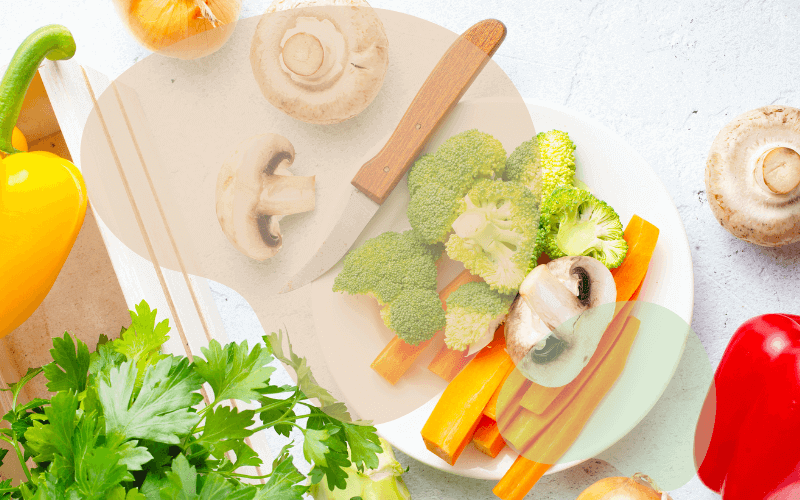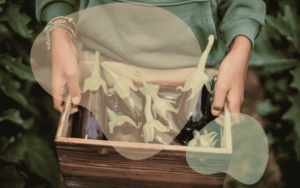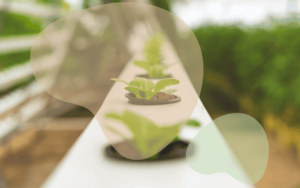Our blog is reader-supported. When you buy through links on our site, we may earn an affiliate commission.
August is an excellent month to plant vegetables that will thrive in cooler fall weather and reward you with a bountiful harvest. Cooler days, fewer pests, and just enough warmth to give new crops a strong start. Now’s the perfect moment to tuck a few fresh seedlings or seeds into the soil, especially if you’re dreaming of crisp fall salads or hearty homegrown soups
In this blog post, we’re sharing 10 of the best vegetables to plant right now, in August. No matter your USDA zone, there are plenty of vegetables that thrive in your garden this season and reward you with a satisfying late-season harvest.
1. Carrots
- USDA Growing Zones: 3–10
- Sun Exposure: Full sun (at least 6 hours per day)
- Soil Needs: Well-drained, loose, sandy or loamy soil rich in organic matter to allow easy root development
- Spacing: Thin seedlings to 2-3 inches apart in rows spaced 12-18 inches apart
Carrots are a classic fall crop. And for good reason! Their flavor improves by a natural process, which turns starches into sugars after exposure to cooler temperatures. Sow seeds directly into the ground in August, and you’ll be pulling up crunchy, homegrown carrots in about 75 days. For the best results, keep the soil consistently moist (but not soggy) to help roots grow long and smooth. If you’re dealing with heavy clay soil, consider loosening it up or planting in raised beds to prevent misshapen or stunted carrots.
2. Broccoli
- USDA Growing Zones: 5–8
- Sun Exposure: Full sun
- Soil Needs: Nutrient-rich, well-draining, slightly acidic to neutral soil (pH 6.0–7.0)
- Spacing: 12–24 inches apart to allow ample head development
Broccoli might traditionally be a spring crop, but it can be planted in mid-late summer for fall harvest, especially in regions with a long, mild autumn season. If you’re still experiencing summer heat, start seeds indoors or in a shaded spot outdoors to protect young seedlings. Once temperatures begin to cool, transplant them into the garden. Broccoli thrives in crisp weather and produces its best heads when it has plenty of space to breathe and grow, so give each plant room to stretch out (about 12-24 inches apart).
3. Spinach
- USDA Growing Zones: 3–9
- Sun Exposure: Full sun to partial shade
- Soil Needs: Rich, well-draining soil with good organic content; prefers slightly acidic to neutral soil (pH 6.0–7.0)
- Spacing: Sow seeds thinly and thin seedlings to about 4-6 inches apart
Spinach is a fast-growing leafy green that’s perfect for sowing in late summer. You’ll be harvesting tender, flavorful leaves well into fall, and in milder climates, it can even survive winter and bounce back in early spring. To prevent them from bolting too soon, give them steady moisture and a bit of shade during hot spells. As temperatures drop, protect young plants from harsh frost using cloches or row covers to help them thrive through the season.
4. Lettuce
- USDA Growing Zones: 4–9
- Sun Exposure: Full sun to partial shade (especially in hot climates)
- Soil Needs: Loose, well-draining soil rich in organic matter
- Spacing: Thin seedlings to 6–12 inches apart, depending on the variety
Lettuce planted in August grows fast and delivers crisp, fresh leaves just in time for early winter salads…Yumm! It loves cooler weather, making late summer the perfect time to sow. In colder regions, you can extend the harvest by growing it under cloches or in a greenhouse. Keep the soil consistently moist to encourage tender growth and avoid bitter-tasting leaves. For a steady supply, try succession planting every couple of weeks throughout the month.
5. Swiss Chard
- USDA Growing Zones: 3–10
- Sun Exposure: Full sun to partial shade
- Soil Needs: Fertile, well-drained soil with organic matter
- Spacing: 6–12 inches apart in rows spaced 18–24 inches apart
Swiss chard is a hardy, but tasty, leafy green. It is low-maintenance, easy to grow and perfect for late summer planting. If you sow it in August, you’ll be harvesting tender baby leaves in as little as four weeks. Keep the soil evenly watered to help the leaves stay sweet and avoid any bitterness from drought stress. Chard handles light frost like a champ, making it a reliable source of fresh greens well into late fall.
6. Radishes
- USDA Growing Zones: 2–10
- Sun Exposure: Full sun
- Soil Needs: Loose, well-drained soil, rich in organic matter
- Spacing: Thin seedlings to 1-2 inches apart
Radishes are fast growers, and many of their varieties are ready to harvest in just 3 to 4 weeks. They thrive in cooler weather and appreciate steady moisture to grow crisp and mild. A bonus point, radishes improve soil texture and can support your garden’s health by acting as a natural pest deterrent when planted alongside other veggies.
7. Kohlrabi
- USDA Growing Zones: 4–9
- Sun Exposure: Full sun
- Soil Needs: Fertile, well-drained soil with good moisture retention
- Spacing: 8–12 inches apart
Kohlrabi is a surprisingly versatile brassica that’s well-suited for planting in August. Both the crisp, swollen stems and leafy greens are edible and delicious. Give the bulbs room to develop properly by providing each plant with plenty of space. Kohlrabi grows best in cooler temperatures and regular watering to stay tender and mild in flavor. A quick hint, Kohlrabi is perfect for roasting, slicing fresh, or tossing into autumn soups!
8. Beets
- USDA Growing Zones: 3–10
- Sun Exposure: Full sun
- Soil Needs: Loose, well-drained soil rich in organic material
- Spacing: Thin seedlings to 3–4 inches apart
Beets are a great late-summer crop, maturing in about 60 to 75 days, and they only get sweeter as the weather cools. Plant them in well-prepared, loose soil to encourage healthy root development. Both the root and leafy tops are edible, which doubles your harvest.
9. Snap Peas
- USDA Growing Zones: 3–7 (better in cooler zones)
- Sun Exposure: Full sun to light shade
- Soil Needs: Well-drained, fertile soil with a neutral to slightly acidic pH
- Spacing: 2 inches apart within rows spaced 18–24 inches apart
Snap peas are a lovely cool-season crop that can still be planted in late August in cooler regions. Just be sure to get them in the ground at least eight weeks before your first expected frost. They’re not only delicious, they naturally add nitrogen to the soil, boosting fertility for future plantings. To get the best yield, give them something to climb, like a trellis or garden netting. This helps them stay upright and makes harvesting a breeze.
10. Scallions (Spring Onions)
- USDA Growing Zones: 3–10
- Sun Exposure: Full sun
- Soil Needs: Well-drained, fertile soil with good moisture retention
- Spacing: 1–2 inches apart
Scallions are quick-growing and are perfect for filling in empty spots around the garden. If you plant them now in early August, you’ll have fresh, flavorful stalks ready to harvest by fall. They are low-maintenance; all that’s needed is to keep the soil moist and do weed control. As a bonus, scallions help deter certain pests and make great companions for other vegetables.
Planting in August opens the door to a surprisingly abundant fall and early winter harvest. With a little planning, you’ll be enjoying crisp greens, sweet roots, and tender shoots long after summer ends.




